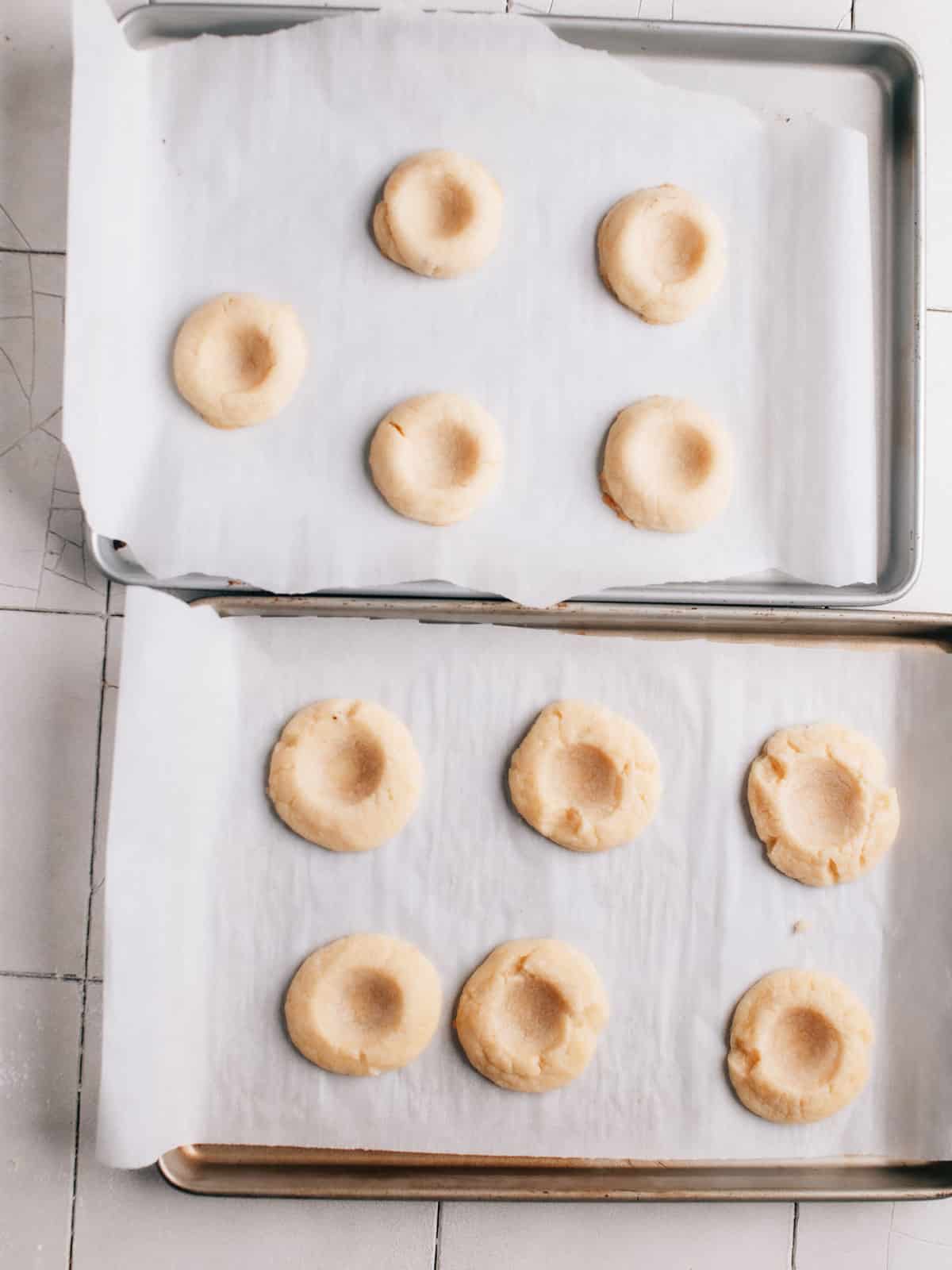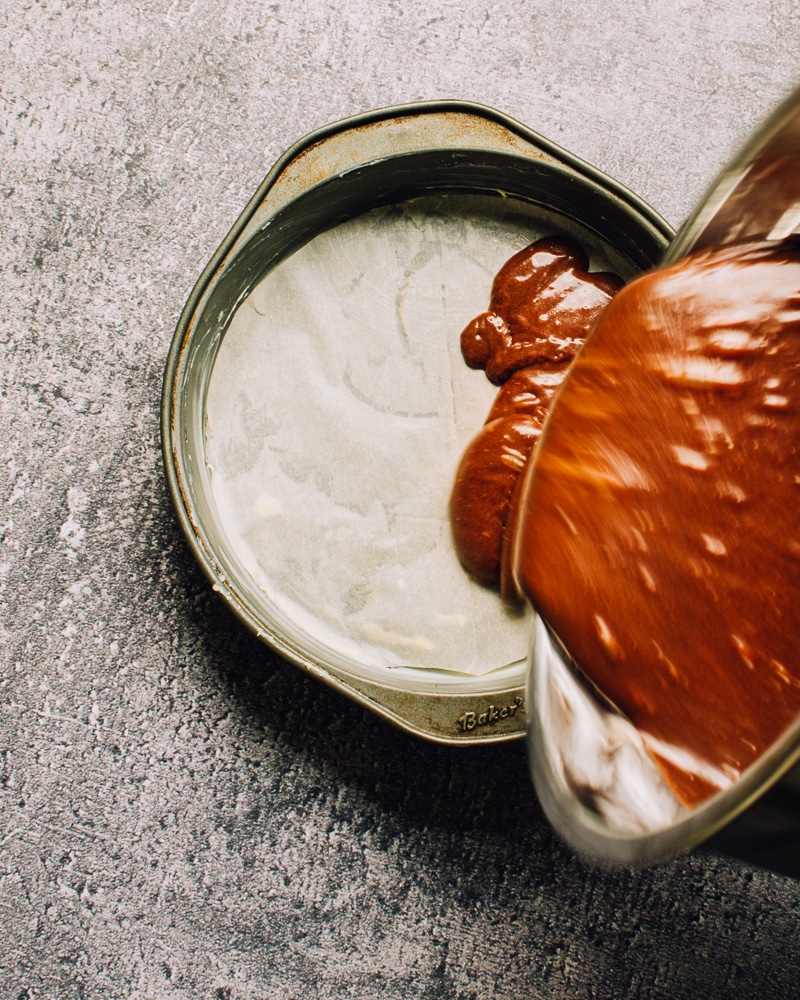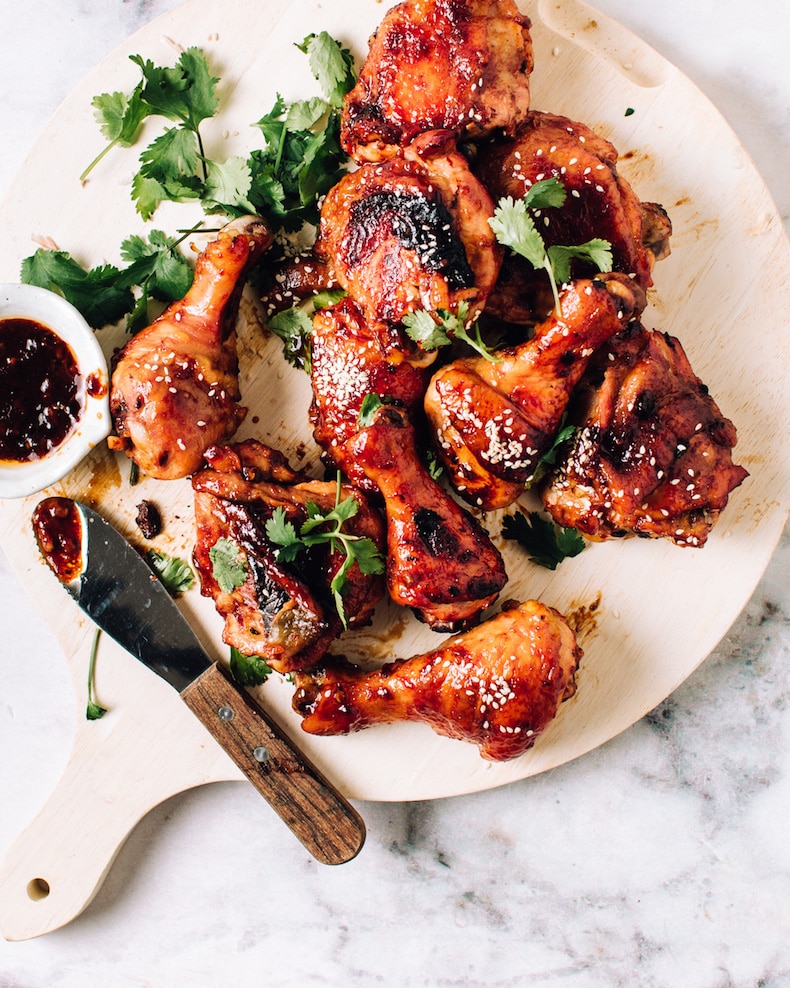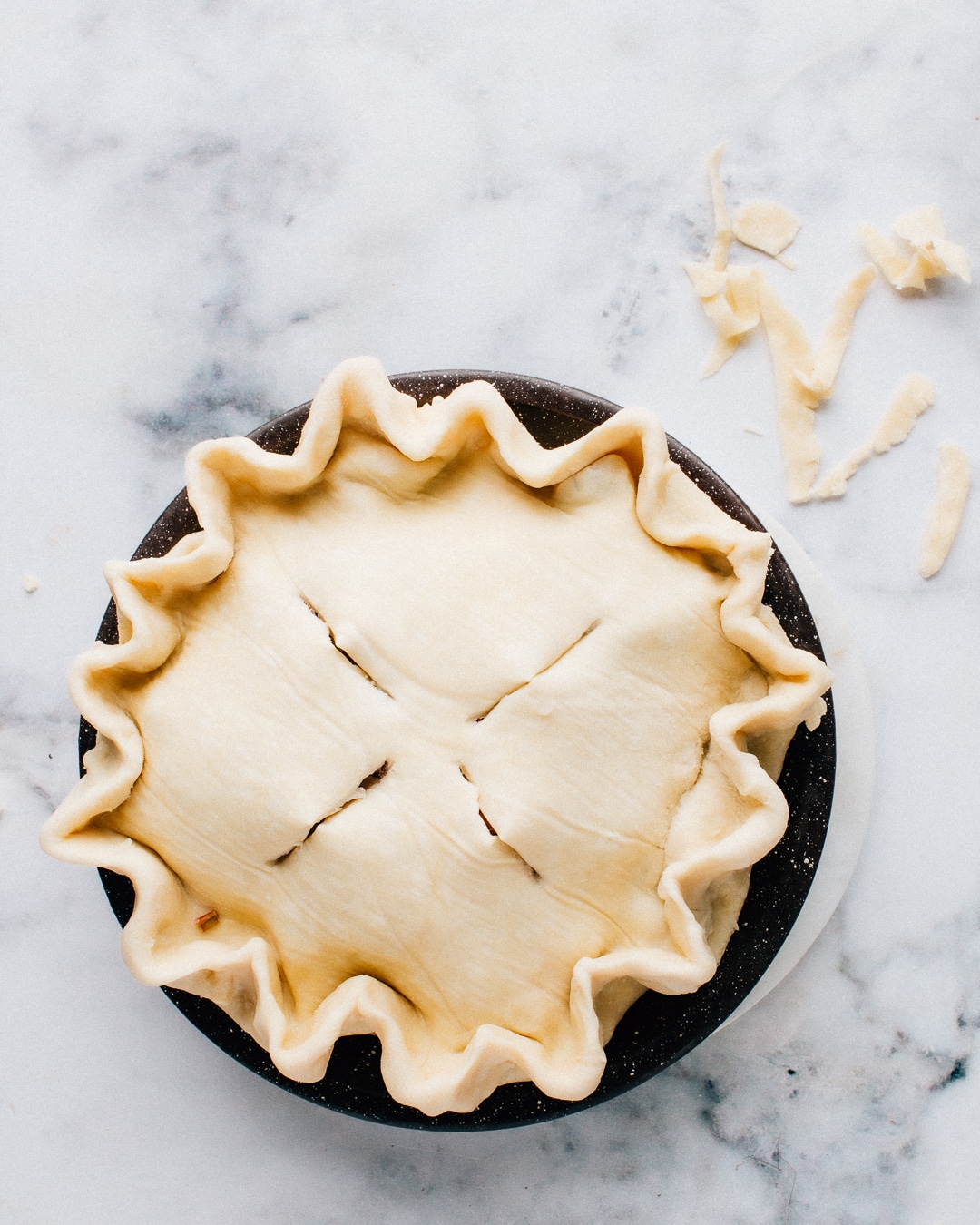Parchment Paper 101: Everything You Need To Know
Sep 18, 2023, Updated Sep 26, 2023
Parchment paper – an indispensable kitchen essential in any seasoned baker’s arsenal. But, what exactly is parchment paper made of, is it safe, and what all can it be used for? I’m a Food Scientist and I’m going to spill all of the details.
What is Parchment Paper and What’s it Made of?
Parchment is a super-thin baking paper made from a vegetable fibre called cellulose with a handy non-stick surface. This special coating is smooth and slippery.
Any food that’s baked, roasted or cooked in a dish lined with parchment lifts easily out of the dish, without the stubborn mess or left behind, stuck-on bits.
You can easily find it in boxes (near the wax paper and aluminum foil) in just about any grocery store.
What is Parchment Paper Used For?
Lining Baking Pans Parchment paper has a number of super handy uses, with lining cookie sheets, cake tins and casserole dishes being one of them. Maybe you’re hosting and planning on making this Moist Chocolate Cake that’s so tender and rich that it needs a lined cake pan for stress-free removal.
Planning to whip together a quick batch of these popular Toblerone Cookies or my grandma’s soft Hermit Cookies? Parchment can be used to line pans for freezing dough balls so that they’re easy to remove (in addition to lining baking pans for the oven). Parchment’s your obvious wingman.
World’s Easiest Cleanup Perhaps it’s lesser-known purpose, but my personal favourite, is using parchment paper to line dishes for everything from the air fryer basket (see Air Fryer 101: How to Buy and Use an Air Fryer), to casserole dishes (like for 3-Ingredient Lazy Lasagna) to pizza pans (like this fan-favorite Butter Chicken Pizza) and everything in between.
It’s especially useful for cheesy bakes (the WORST to clean up) and sticky marinades, like my fav Easy Oven-Baked Honey BBQ Chicken,whose deliciously-caramelized sauce can glue to an unlined pan like white on rice.
I also love using it to roll out sticky dough, like this easy, failproof pie crust recipe, or my viral Butter Naan recipe, to make counter cleanup a breeze.
With a parchment-lined baking vessel, simply peel off the paper and toss it in the compost bin. Your dishwashing efforts will be pared down to nothing. You’re welcome.
Cooking En Papillote Parchment is also perfect for the classic French version of packet dinners – cooking ‘en papillote’. En papillote translates from french loosely as ‘in a paper envelope’ and it’s a method of cooking usually fish or poultry with vegetables in an origami-style paper pouch in the oven.
The steam from the food gets trapped in the papillote and makes for a moist, tender meal without the need for adding any richness like oil or butter.
Separating Food in the Freezer Have you ever made a batch of homemade Ground Chicken Burgers or maybe even this irresistible Easy Moist Banana Bread? It’s all roses if you’re planning on eating them up right away.
But if you’re not… parchment.
Cut a sheet of this handy little kitchen paper into a few pieces and simply layer your burger patties or pieces of banana bread between sheets and store in a freezer-safe bag.
The parchment paper will prevent them from binding to each other and make for a super easy pull-apart process.
Can parchment paper go in the oven?
Parchment paper is absolutely oven-safe – heck – the main purpose of parchment paper is to line cookie sheets and cake pans. Parchment paper is completely oven safe up until 425°F.
Can parchment paper go in the microwave?
Yes, parchment paper is generally safe to use in the microwave. It’s heat-resistant and doesn’t contain any materials that should cause issues when microwaving. The silicone coating that makes it non-stick is also microwave-safe. I use it all the time to cover my dish when I’m making microwaved poached eggs or reheating leftovers to avoid splatters.
However, there are a couple of things to keep in mind:
- Check Packaging: Always take a quick look at the packaging or manufacturer’s guidelines just to make sure there are no specific warnings against microwave use.
- Short Bursts: If you’re microwaving something for an extended period, you may want to check on it periodically. Though the risk is low, any paper product can potentially catch fire if exposed to high heat for a prolonged time.
So, for quick reheating or cooking tasks, parchment paper should be a safe choice in the microwave.
Is parchment paper compostable?
Most of the time, and with most brands, parchment paper is indeed compostable. But at the end of the day, it really comes down to how the manufacturer coats their parchment paper. Uber popular parchment paper brand, PaperChef’s products are not only compostable but – yay – biodegradable, too.
Is parchment paper safe?
Yes, parchment paper is generally safe to use in cooking and baking. It’s made to withstand high temperatures, usually up to around 420–450°F (216–232°C), depending on the brand. That makes it ideal for lining baking sheets, separating layers of food for storage, or even for cooking en papillote (food steamed in a folded pouch).
However, there are a few things to keep in mind:
- Temperature Limits: Check the packaging for temperature guidelines. Don’t use it in situations where it’ll be exposed to temperatures higher than it’s rated for.
- No Direct Flame: Don’t let parchment paper come into direct contact with an open flame or heating elements, as it can catch fire.
- Food-Safe: Make sure you’re using food-grade parchment paper, not something intended for other uses like craft projects.
- Non-Stick Coatings: Some parchment paper comes coated with silicone to make it non-stick. While this is generally considered safe, if you have concerns about silicone, look for uncoated options.
- Environmental Concerns: Parchment paper is not all compostable due to its silicone coating, so look for one that says “compostable” specifically on it. I use PaperChef, which is certified compostable.
As long as you’re using it as intended, parchment paper is a handy and safe tool in the kitchen.
Wax Paper Vs. Parchment Paper
Waxed paper and parchment paper are similar, but they have different properties and best-use cases.
Waxed Paper:
- Coating: Coated with a layer of paraffin wax.
- Heat Resistance: Not heat-resistant; not suitable for use in the oven.
- Best Uses: Great for wrapping foods, separating layers of baked goods for storage, or as a liner for cold preparation in the kitchen.
- Microwave Safe: Generally safe for microwave use because microwaves heat food, not the paper, but always check the packaging.
- Compostable: Typically compostable, as it’s just paper with a thin layer of wax.
Parchment Paper:
- Coating: Usually coated with silicone to make it non-stick.
- Heat Resistance: Heat-resistant and safe for use in the oven, usually up to around 420–450°F (216–232°C).
- Best Uses: Ideal for baking, roasting, and any other cooking methods that require heat.
- Microwave Safe: Yes, generally safe in the microwave.
- Compostable: Not usually compostable because of the silicone coating, although some brands offer compostable options.
In a nutshell, if you’re cooking with heat, go with parchment paper. If you’re doing pretty much anything else like wrapping or storing, waxed paper should do the trick. Just don’t mix them up, or you might end up with melted wax on your baked goods.
Butcher paper vs parchment paper
Butcher paper and parchment paper serve different purposes in the kitchen, and they’ve got some key differences:
Butcher Paper:
- Material: Generally made from kraft paper, which is a strong, coarse paper.
- Coating: Uncoated, but sometimes waxed or treated on one side to make it moisture-resistant.
- Heat Resistance: Not designed for high-heat cooking methods like baking.
- Best Uses: Traditionally used for wrapping meats, fish, and cheeses. Also popular in BBQ to wrap meats during smoking.
- Microwave Safe: Depends on the brand and whether it has any wax coating; always check the packaging.
- Breathable: Allows moisture to escape, which can be beneficial for certain types of cooking like smoking.
Parchment Paper:
- Material: Usually made from denser paper.
- Coating: Coated with silicone to make it non-stick and heat-resistant.
- Heat Resistance: Safe for use in the oven, generally up to around 420–450°F (216–232°C).
- Best Uses: Used for baking, roasting, and steaming. It’s non-stick, so it’s good for cookies, cakes, and other baked goods.
- Microwave Safe: Yes, generally safe for microwave use.
- Non-Breathable: Locks in moisture, which can be good for certain baked goods but not ideal for things like smoked meats.
So, if you’re baking or need a non-stick surface, parchment paper is the way to go. Butcher paper, on the other hand, is better for wrapping and storing foods, and it’s the go-to for smoking meats in many BBQ circles.














I have heard of people using parchment paper to wrap bacon, place in canning jars, and process in a pressure canner. Is this a recommended procedure?
Hi Mary, there are lots of food safety issues with canning meat at home. I personally have not done it or researched it so I can’t give advice on this!
I never realized how much easier baking could be with the help of parchment paper. I can’t wait to try out the tips for lining casserole dishes and freezing dough balls – my kitchen just going to get a whole lot more efficient!
I’ve been using parchment paper for years, but I had no idea what it was actually made of until now. It’s great to know that it’s a safe and natural option for baking.
I always thought parchment paper was just for lining baking pans, but this post opened my eyes to so many other uses for it. From roasting veggies to making DIY piping bags, I can’t wait to try out all of these new ideas.
As someone who loves baking but hates cleaning up the mess, this post was a lifesaver. I never realized that lining my baking pans with parchment paper could make the cleanup process so much easier. Thanks for the great tips Jenn!
This blogpost is going to make baking so much easier for me! I had no idea that parchment paper could be used for freezing dough balls as well. I’m definitely going to try this out the next time I bake cookies.